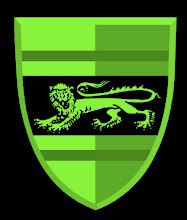
A double page spread is unlike a front cover or contents page in the way that there are no huge conventional rules when it comes to creating one. There are many in every magazine, all of which are different to prevent the magazine from becoming repetitively boring. Therefor, in every genre there are many, many different ways to construct a double page spread. For example a Hip-Hop magazine may have a very variable structure when it comes to laying out a spread, but the base conventions remain constant, such as typography, colour etc...
Of the unlimited layouts and styles that can be used, I like the one shown above taken from a rock magazine. If i were to apply Hip-Hop conventions to this style I could use it in my Hip-Hop magazine.
In the above example, we see a black and white picture dominating the left side of the page, the picture shows an artist at work, creating a sense of realism. On the right we see white text on a black background. This contains an interview with the band, it is written in small neat typography and in small neat paragraphs.
I like the use of a separated box in the top left, I think it is a good place to put any additional information.
The banner the spans over both pages is an idea I would like to adapt into the conventional Hip-Hop style. I like the way in which colours and fonts are mixed to create an eye catching effect.
The background contain no gradient effect of any kind and is just plain. I like this as it makes the text clearer the read.
When i create my own double page spread I will use many of these ideas but I will adapt and develop them to fit the Hip-Hop genre. For example, I will use a close up of an expressionless face or and I will use smooth and strong typography, as well as the distorted typography I have used on my front cover.
I will not use multiple pictures on one page as the above example has done but I will use a single picture on the left with a more close up shot. I will use the space that in the above example is pictures on the right to hold my interview.
The long box on the right is another idea I will not use. In the above example the white contrasts the black, making it stand out and act as a place for related information. I like this idea as it not only make the page look more professional but it also makes good use of space. I however, will use this space for my interview.







